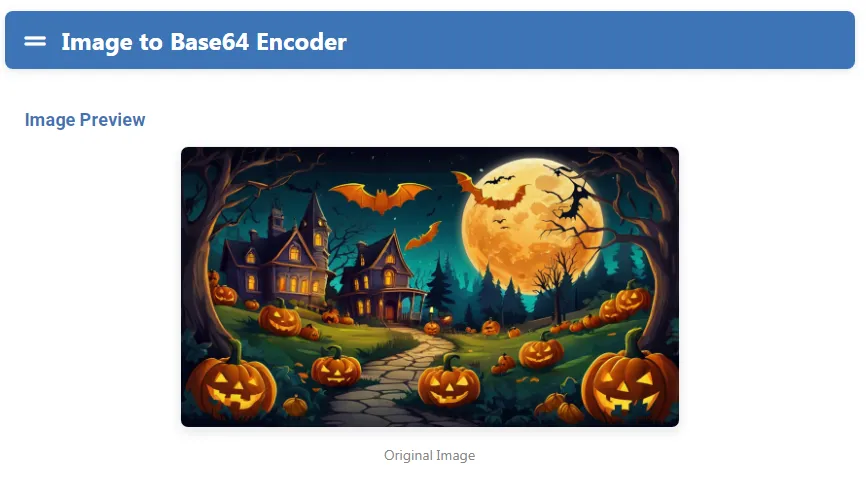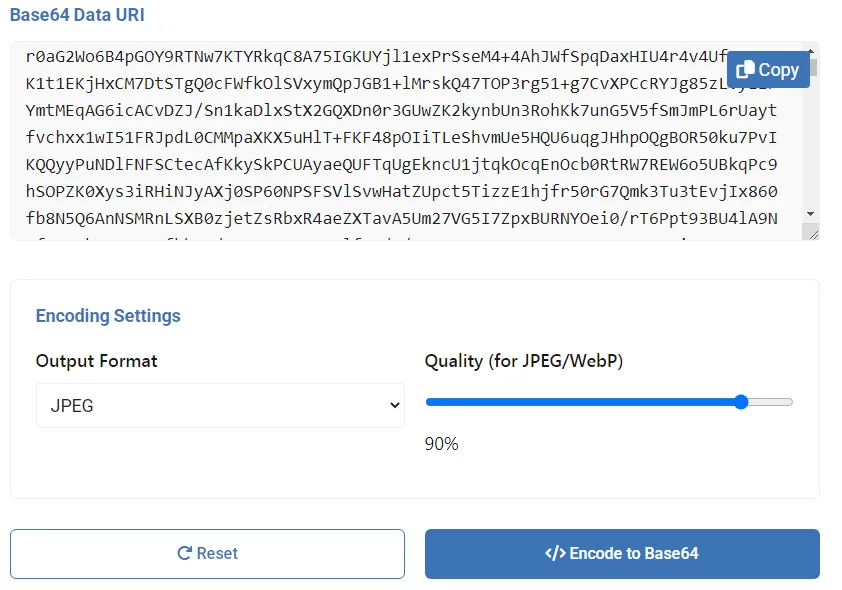Image Preview
Base64 Data URI
Encoding Settings
Processing image…
Image to Base64 Encoder Tool: The Developer’s Guide to Embedding Images Directly in Code
In the world of web development and design, efficiency and performance are paramount. Have you ever needed to reduce HTTP requests to make a website load faster, or embed an image directly into an HTML or CSS file without linking to an external source? While this might sound like a complex programming task, it’s made simple through a process called Base64 encoding.
Our Image to Base64 Encoder Tool is a specialized, free web application designed to instantly convert your image files into a Base64 data URI string. This powerful Image to Base64 Encoder Tool Online is part of the Image Tools suite, built with a critical feature: complete privacy. Your images are processed entirely within your own web browser; they are never uploaded to any server, ensuring your sensitive project assets and personal photos remain 100% confidential.
What is Base64 Encoding and Why Use It?
Base64 encoding is a method that converts binary data (like an image file) into a plain text ASCII string format. This text string represents the image itself, which can be pasted directly into your code.
Key Benefits of Using Base64 Encoding:
✅ Reduce HTTP Requests: Embedding images directly in your HTML or CSS with a data URI eliminates the need for the browser to make separate network requests to fetch image files. This can significantly speed up the loading of web pages, especially those with many small images.
✅ Simplify Asset Management: For small, crucial images like logos, icons, or buttons, embedding them as Base64 means one less file to manage, upload, and link to. Your code becomes more self-contained.
✅ Enhance Portability: A single HTML file can contain all its images within it, making it incredibly portable and easy to share without worrying about broken image links due to missing files.
✅ Improve Privacy for Email: Some email clients block externally linked images by default. Embedding images as Base64 ensures they display automatically for the recipient, which is crucial for email marketing campaigns.
*Note: Best used for smaller images. Large Base64 strings can increase your HTML/CSS file size.*
How to Use Our Image to Base64 Encoder Tool: A Step-by-Step Guide
Converting an image to a Base64 data URI is a straightforward, three-step process with our tool.
Step 1: Access the Tool and Upload Your Image

- Navigate to the Image to Base64 Encoder Tool on the Image Converter website.
- Upload your image using the simple Drag & Drop interface or by clicking to browse your computer.
- Supported files: JPG, PNG, GIF, SVG.
Step 2: (Optional) Configure Output Format
Before encoding, you can optimize your image:
- Output Format: Choose to encode your original image or convert it first to JPEG, WebP, or PNG.
- Quality Selection Bar: If you choose JPEG or WebP, a slider will appear (e.g., 60% to 100%). Lowering the quality can drastically reduce the length of the resulting Base64 string, which is helpful for performance.
Step 3: Encode to Base64
Click the “Encode to Base64“ button. The tool will instantly process the image directly in your browser and generate the Base64 data URI string.
Step 4: Copy Your Base64 Code
The tool will display the full Data URI code in a text box.

- The code will look like this:
data:image/png;base64,iVBORw0KGgoAAAANSUhE...(the string is very long). - Simply click the “Copy” button provided next to the code box. This will copy the entire string to your clipboard, ready to be pasted into your code editor.
Step 5: Implement in Your Project
Paste the copied code directly into your HTML img tag or your CSS file.
- HTML Example:htmlCopyDownloadRun<img src=”data:image/png;base64,iVBORw0KGgoAAAANSUhE…” alt=”My Embedded Image”>
- CSS Example:cssCopyDownload.logo { background: url(data:image/png;base64,iVBORw0KGgoAAAANSUhE…); }
To start over with a new image, use the “Reset” button.
Key Benefits of Using Our Free Online Encoder
⚡ Instant Client-Side Processing
The conversion happens immediately in your browser. There are no slow server uploads or processing delays. You get your Base64 string in seconds.
🔒 Unmatched Privacy and Security
This is the tool’s most critical advantage. Your images are never sent over the internet. This client-side execution is essential for developers working with proprietary logos, unreleased product images, or any confidential assets, as it guarantees zero risk of data exposure.
🎯 Precision Format Control
The ability to convert and compress the image to JPEG or WebP before encoding gives you control over the final size of the Base64 string, allowing for performance optimization.
📋 One-Click Copy Functionality
The dedicated copy button eliminates the error-prone task of manually selecting and copying an extremely long string of text, ensuring code integrity.
💻 No Installation or Registration
As a free web app, it’s accessible from any device with a modern browser. There are no downloads, no subscriptions, and no sign-ups required.
Who Should Use This Base64 Encoder Tool?
- Web Developers: Speed up website load times by embedding critical above-the-fold images, icons, and logos directly into their HTML/CSS.
- Web Designers: Create self-contained design mockups or prototypes that can be shared as a single HTML file without broken links.
- Email Marketing Specialists: Ensure images display reliably in email newsletters across all clients, bypassing external image blocking.
- Software Engineers: Embed small images or icons directly within desktop or mobile application code to simplify distribution.
- Students and Learners: Understand and experiment with data URIs without needing to use command-line tools.
Conclusion: Streamline Your Code and Boost Performance
Base64 encoding is a powerful technique for modern web development, and our Image to Base64 Encoder Tool Online makes this power accessible to everyone. It transforms a complex, command-line-centric process into a simple, secure, and browser-based task. By reducing HTTP requests and simplifying asset management, you can create faster, more self-contained, and more reliable web projects.
Stop managing countless tiny image files and start optimizing your workflow.
Ready to embed your first image? ➡️ Use our free Image to Base64 Encoder Tool today and feel the difference in your project’s performance!
